






| Blue Land Crab (Cardisoma guanhumi (Latreille, 1828)) |







|
|
Scientific name: Cardisoma guanhumi (Latreille, 1828) Common name: Blue Land Crab French name: Crabe de terre, Crabe terrestre blanc, Crabe terrestre bleu. Order: Decapoda Family: Gecarcinidae Size: The width of the carapace can reach 13 cm, the weight can reach 500 g. Habitat : The Blue Land Crab is a land crab that breathes with gills that must always remain moist. It is therefore found in wetlands near water, shores, mangroves, marshes, river banks but never very far from marine coasts. It digs burrows down to underground water. Food: Omnivore, leaves and fruits collected near the burrow but also insects and carrion. Reproduction : After mating, the fertilized females carry their eggs under their body. Hatching takes place after two weeks and the larvae must be released into salt water to continue their development which will bring them to the crab state after five moults. Geographic area: American Atlantic coasts, from Florida and the Gulf of Mexico to Brazil. West Indies. |
The Blue Land Crab has a smooth and strongly domed carapace. They are variable in colour, from dark blue to greenish, yellow or whitish grey. Females are generally whitish grey and juveniles brown with orange legs. There are two thick strips of hair on either side of the mouth. As with many crab species, males have dimorphic claws. The large claw can exceed the size of the carapace. Growth is quite slow and requires around 60 moults to reach the final size, which is around three times more than for other crab species. This crab is eaten in the West Indies where it is captured using a trap placed on the opening of its burrow. Fiddler Crabs of the Uca genus and other related genera have smaller strips of hair on the sides of the mouth and the large claw is significantly more hypertrophied. The Swamp Ghost Crab (Ucides cordatus), purple, orange or greyish in colour, has a dark H-shaped mark on the shell. |
| [To know more about the Blue Land Crab] [Next picture] [Top] |
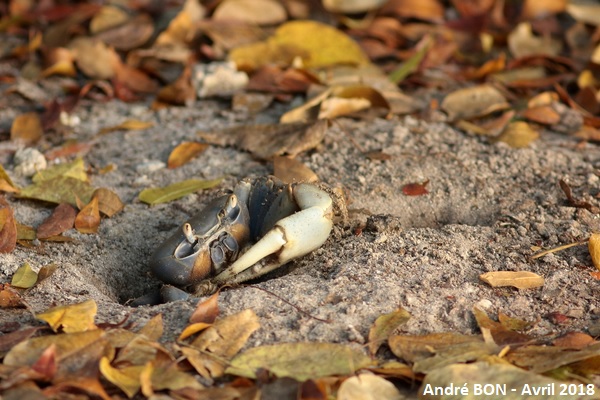
|
I observed these Land Crabs at Sainte-Anne towards Anse Caritan, less than twenty meters from the shore. |
| [To know more about the Blue Land Crab] [Next picture] [Previous picture] [Top] |
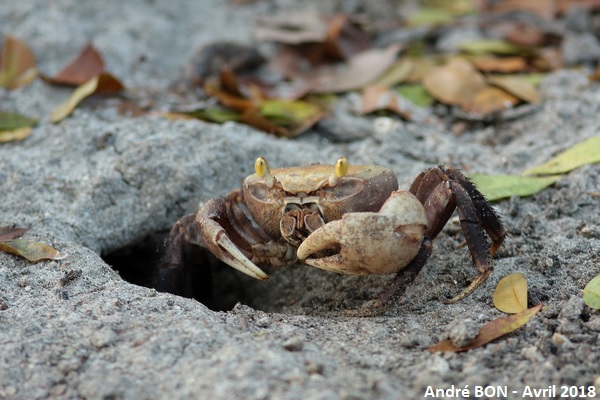
|
Here is a dark coloured specimen, is it a male? |
| [To know more about the Blue Land Crab] [Next picture] [Previous picture] [Top] |
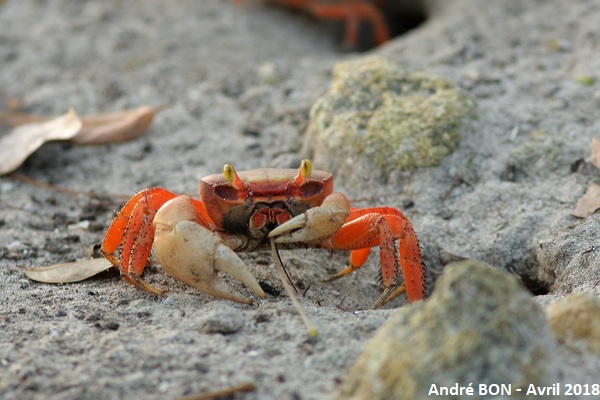
|
Here the legs are orange and the body orange brown, so I think we have a juvenile. |
| [To know more about the Blue Land Crab] [Next picture] [Previous picture] [Top] |
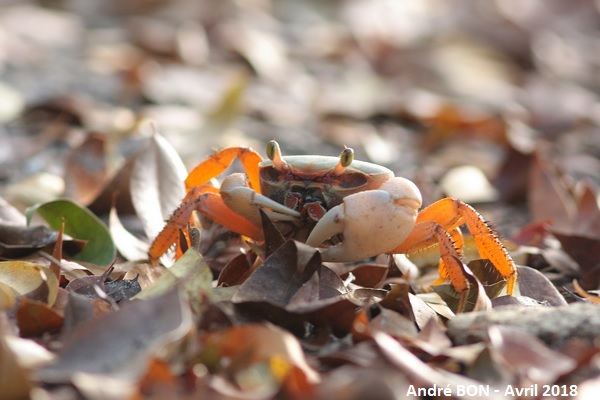
|
The little game consists of sitting in wait, motionless near the burrows. Is it because we were at the end of the day but we did not have to wait long before seeing the inhabitants of the place walk out. |
| [To know more about the Blue Land Crab] [Next picture] [Previous picture] [Top] |
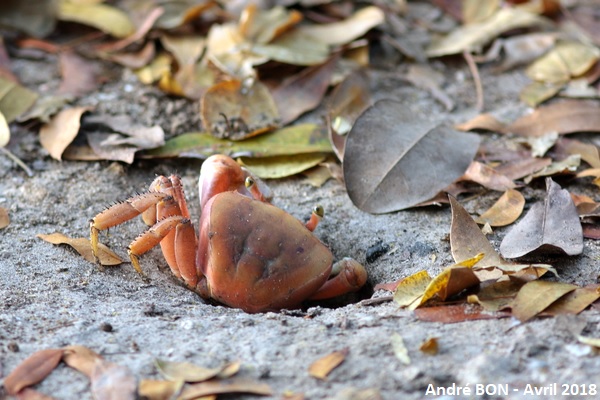
|
The domed and smooth shape of the carapace is clearly visible on this photo. |
| [To know more about the Blue Land Crab] [Next picture] [Previous picture] [Top] |
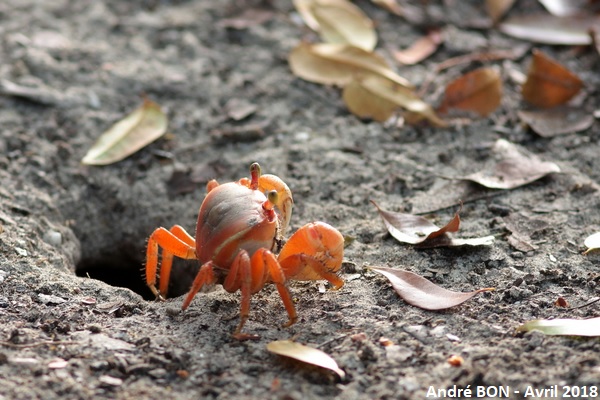
|
The large claw is smaller than on Fiddler Crabs. |
| [To know more about the Blue Land Crab] [Previous picture] [Top] |
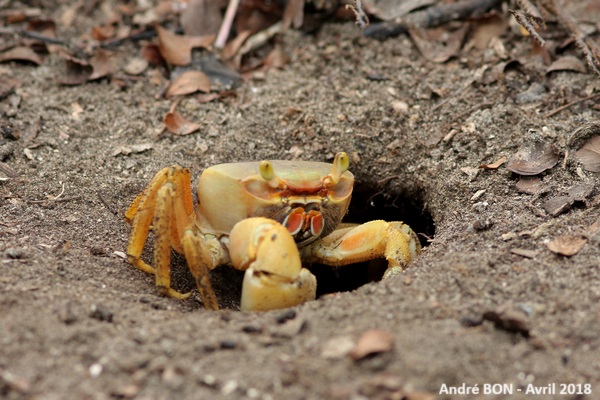
|
Here is a yellowish specimen. |